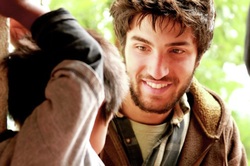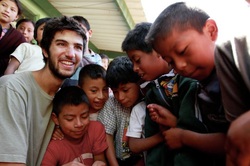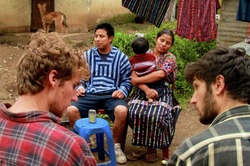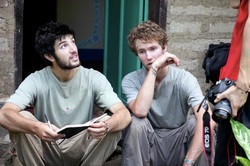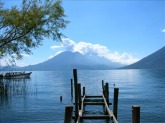
We leave tonight, June 14th, to start our eight week excursion to Guatemala, a country that is known for its beautiful landscapes, rich indigenous culture and unfortunately, for its social inequality and extreme poverty. Guatemala has emerged from a brutal 36 year civil war as one of Central America’s largest economies with democratic and macroeconomic stability. The past ten years for Guatemala may seem to represent a period of growth and prosperity but a closer look reveals a country that has been unable to address chronic problems in it’s society. According to the most recent World Bank Report, more than 50% of Guatemala’s population lives below the poverty line and 15% live in extreme poverty. For the indigenous population, that comprises 38% of the population, these statistics rise dramatically to 76% living in poverty and 28% in extreme poverty.
These statistics are shocking and cause me to immediately question how such a seemingly rich economy can leave so many people to suffer. Many people such as Samuel Loewenberg who wrote Political Will is Scarcer than Food, an article about malnutrition in Guatemala, blame a lack of political will to tax the rich and help the poor. Whatever the reason, the reality is that over half Guatemalan’s children are chronically malnourished (6th worst in the world) and in rural areas where the population is mostly of Mayan descent malnutrition reaches 80%. Something must be done. The question is what should be done and how can we help to make it happen?
Without going to into an in depth debate on development, I believe that action needs to be taken at many levels through government programs, charitable work etc. But the solution that has best resonated with me, as an economic and international relations major at Claremont McKenna College, is through microfinance. If done correctly, Microfinance has the potential to provide financial services, such as credit and savings, as well as non-financial services, such as health insurance and health education. Instead of giving handouts through charity, Microfinance works to help the poor bring themselves out of poverty in a way that is sustainable.
This week I was listening to an NPR radio show (How Foreign Aid Hurts Haitian Farmers) on how food aid to Haiti has caused Haitian rice farmers that were unaffected by the earthquake, to face the dilemma of eating their own crop or selling it for almost nothing and going hungry to try and keep their children in school. The price of rice has dropped because so much of it was freely given in the relief effort. Clearly we cannot allow for people to go hungry after natural disasters but maybe we need to rethink the solution.
Part of this solution may be Fonkoze in Haiti or Banrural Grameen Microfinanzas in Guatemala. These organizations target the poorest of the poor and have shown to do amazing work. It is with these thoughts in mind that Chris, Sean, Ryan and I have chosen to spend our summer in the rural village of Pena Blanca where Grameen Guatemala has started a microfinance program. Hopefully by bringing an open mind and a desire to learn, this summer may begin to provide some answers (As long as Chris doesn't gamble away our dollar budget)
These statistics are shocking and cause me to immediately question how such a seemingly rich economy can leave so many people to suffer. Many people such as Samuel Loewenberg who wrote Political Will is Scarcer than Food, an article about malnutrition in Guatemala, blame a lack of political will to tax the rich and help the poor. Whatever the reason, the reality is that over half Guatemalan’s children are chronically malnourished (6th worst in the world) and in rural areas where the population is mostly of Mayan descent malnutrition reaches 80%. Something must be done. The question is what should be done and how can we help to make it happen?
Without going to into an in depth debate on development, I believe that action needs to be taken at many levels through government programs, charitable work etc. But the solution that has best resonated with me, as an economic and international relations major at Claremont McKenna College, is through microfinance. If done correctly, Microfinance has the potential to provide financial services, such as credit and savings, as well as non-financial services, such as health insurance and health education. Instead of giving handouts through charity, Microfinance works to help the poor bring themselves out of poverty in a way that is sustainable.
This week I was listening to an NPR radio show (How Foreign Aid Hurts Haitian Farmers) on how food aid to Haiti has caused Haitian rice farmers that were unaffected by the earthquake, to face the dilemma of eating their own crop or selling it for almost nothing and going hungry to try and keep their children in school. The price of rice has dropped because so much of it was freely given in the relief effort. Clearly we cannot allow for people to go hungry after natural disasters but maybe we need to rethink the solution.
Part of this solution may be Fonkoze in Haiti or Banrural Grameen Microfinanzas in Guatemala. These organizations target the poorest of the poor and have shown to do amazing work. It is with these thoughts in mind that Chris, Sean, Ryan and I have chosen to spend our summer in the rural village of Pena Blanca where Grameen Guatemala has started a microfinance program. Hopefully by bringing an open mind and a desire to learn, this summer may begin to provide some answers (As long as Chris doesn't gamble away our dollar budget)
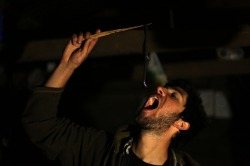
 RSS Feed
RSS Feed